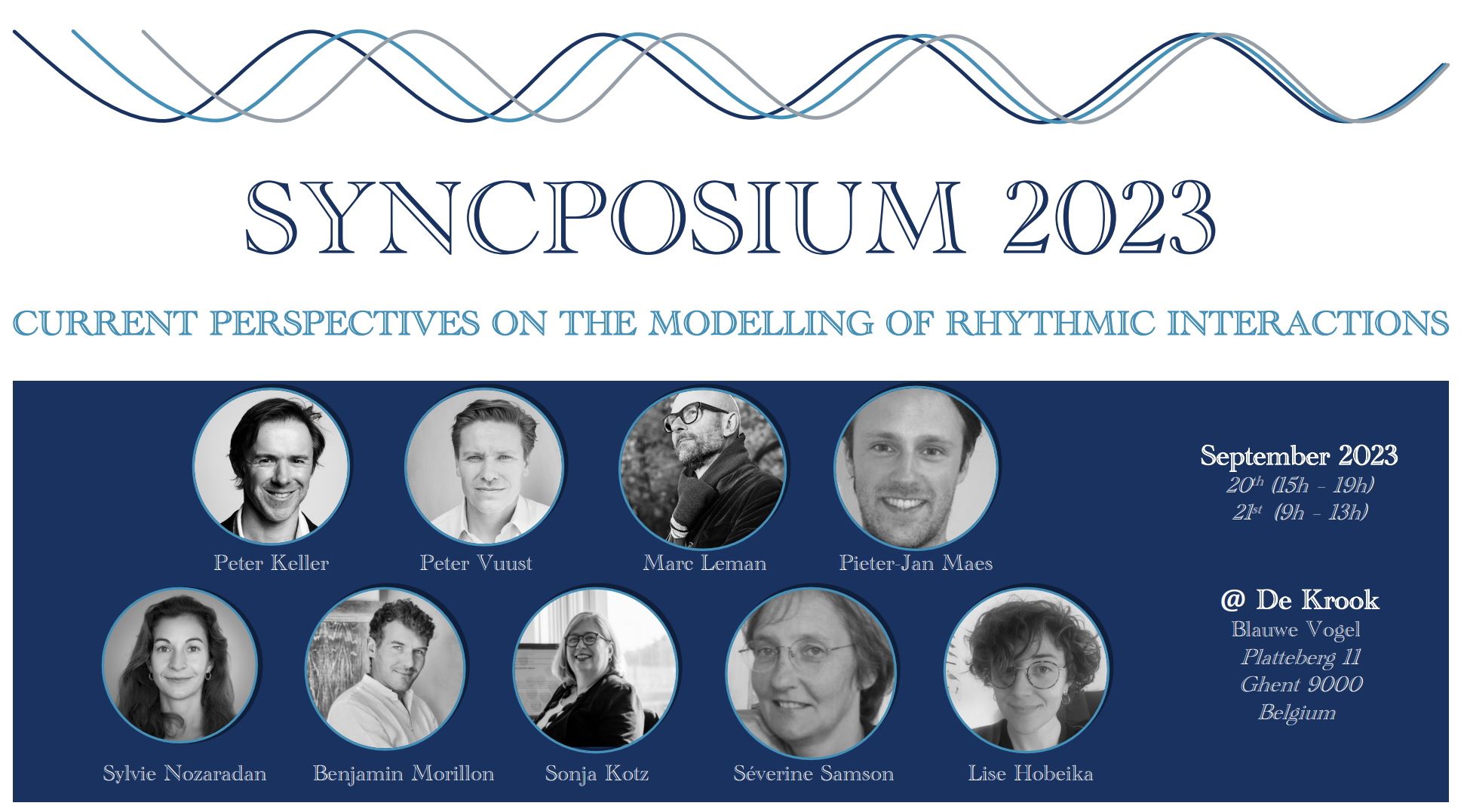Syncposium 2023
Practical info updated & program added (bottom of page)
The Syncposium kicks off in 2023 as a concise scientific event, bringing together renowned international experts who have engaged in extensive research on rhythm as a fundamental dimension of human life. The nature of the topic is intrinsically multidisciplinary, lying at the intersection of neuroscience, psychology, movement sciences, and musicology.
The format of this event is designed to be compact, condensing a series of keynote lectures into two half-day sessions. During this time, speakers will have ample opportunity to elucidate their perspectives. In contrast to larger scientific conferences, our goal is to provide an agile organization that is both budget-friendly and accessible, with free attendance for all. The event’s brief duration is intended to accommodate attendees’ schedules. By offering a hybrid format, we aim to reach a diverse audience, enabling them to fully benefit from the rich content. The discussion around the day’s topics will be enhanced through extended Q&A sessions, round tables, and an on-site reception for informal scientific discussions. The event can host up to 120 attendees onsite and provide unlimited access to online streaming.
The theme of this inaugural edition, hosted by the IPEM Institute for Systematic Musicology at Ghent University (Belgium), is ‘Current Perspectives on the Modelling of Rhythmic Interactions’. Examining the spectrum of human behaviours, ranging from walking and dancing to ensemble music playing, it becomes apparent how intricately complex rhythmic patterns evolve over time. However, systematically investigating the underlying mechanisms and fundamental dynamics of these patterns is a challenging endeavour that necessitates simplification. Our discussions will aim to demystify the concept of modelling and contemplate its core principles beyond complex mathematical formulas. We will explore how scientists navigate complexity, the perspectives they adopt, the assumptions underlying their approaches, and the limitations and biases that arise. Our speakers’ presentations will revolve around the frameworks shaping their research, from brain networks and brain-body-environment interactions to interpersonal coordination and musical interactions.
We envision the Syncposium as a continuously evolving dialogue, striving not only to comprehend, but also to shape future trajectories of the study of human rhythmic interactions.
Flyer
Dates
20/09/2023 (15:00 – 19:00)
21/09/2023 (09:00 – 13:00)
Location
Online: zoom link reveived at registration
In person:
- Room ‘Blauwe Vogel’
- De Krook Library
- Platteberg 11
- 9000 Ghent, BE






 picture by Valery Vermeulen
picture by Valery Vermeulen